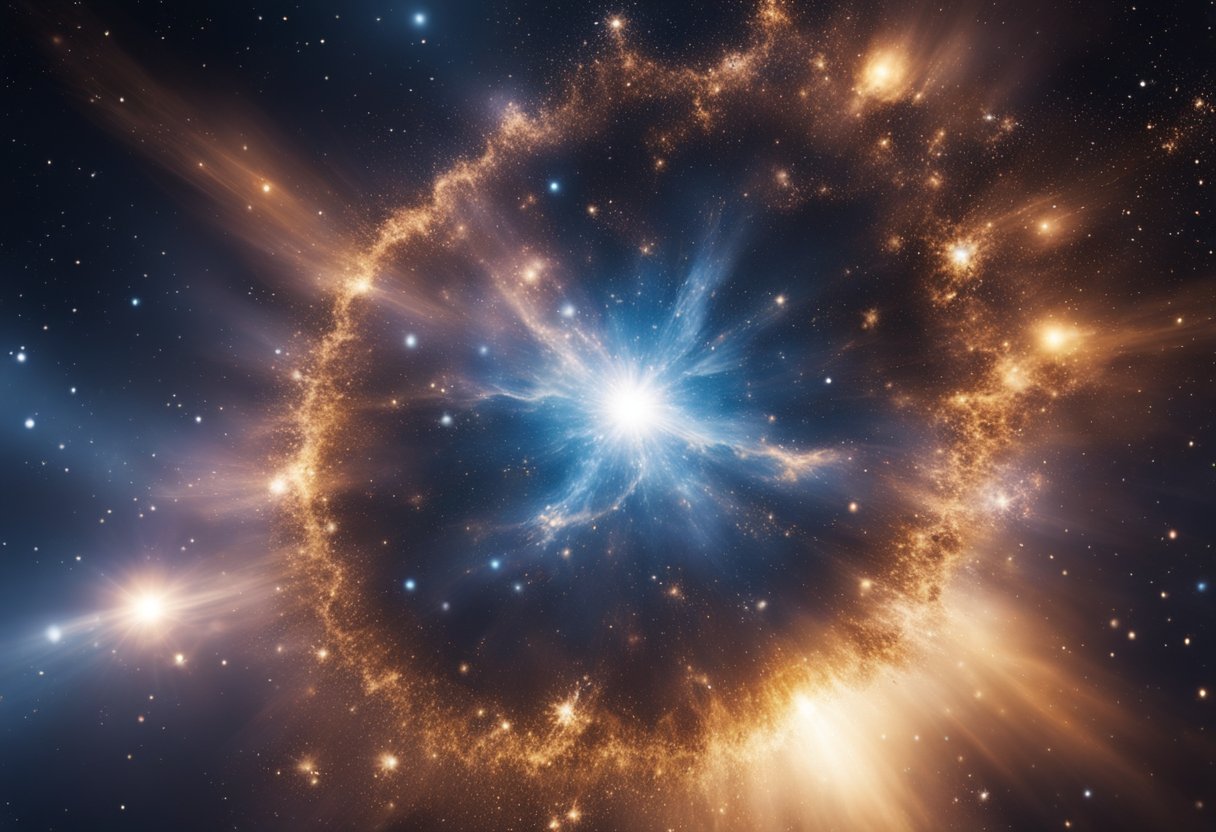
Universe Mysteries Unravelled – As we gaze up at the night sky, the glittering stars and vast expanse of darkness hold countless mysteries. From substances that bind the cosmos yet remain unseen, like dark matter and dark energy, to the enigmatic behaviour of black holes, our universe is a cosmic puzzle that scientists have long strived to understand. These enigmatic subjects spark our curiosity and drive the continuous search for knowledge, with each discovery bringing us closer to grasping the true nature of reality.
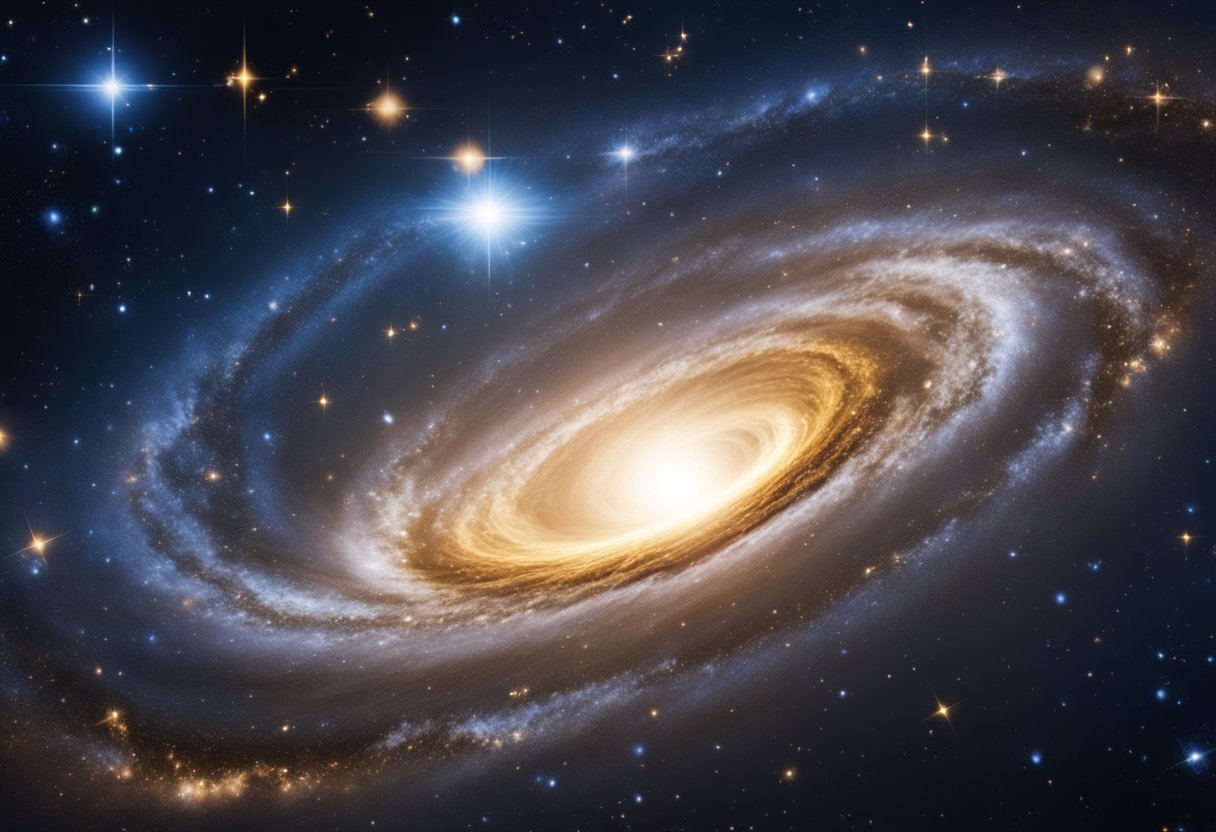
In the grand scale of the universe’s timeline, we have barely scratched the surface, yet our endeavours in astrophysics and cosmology have led to significant insights into the formation and evolution of the universe. Groundbreaking missions and advanced telescopes have allowed us to peek into the universe’s distant past and survey the celestial bodies that populate it. As we develop theories and models to describe the universe’s architecture, agencies like the European Space Agency and private initiatives like SpaceVoyageVentures.com are propelling us into new frontiers, including the nascent realm of space tourism.
As we delve into the mysteries of the universe’s origins, it is essential to understand the integral theories and observations that form the foundation of modern astrophysics. From the moment of the Big Bang to the intricate structure of galactic formations, each element provides a chapter in the grand narrative of cosmic history.
The Big Bang Theory posits that our universe began approximately 13.8 billion years ago from an infinitely dense and hot singularity. This idea was first conceptualised by Georges Lemaître, who proposed that the observable expansion of the universe, as evidenced by Edwin Hubble, traces back to a single origin point. As time progressed, the universe cooled and expanded, leading to the formation of subatomic particles and ultimately atoms.
Following the Big Bang, the universe was suffused with a glow that has cooled over billions of years to become the Cosmic Microwave Background (CMB). The CMB is the afterglow of the Big Bang and provides us with a snapshot of the universe when it was only 380,000 years old. Our understanding of the CMB has been bolstered by various satellite observations, revealing patterns that are indispensable for our knowledge of cosmic conditions in the infant universe.
Stars formed within a few hundred million years following the Big Bang, emerging from clouds of gas and dust where gravity pulled matter together to ignite nuclear fusion. Galaxies, comprising millions to trillions of stars, including our own Milky Way Galaxy, began to take shape through the hierarchical merging of smaller structures. These events laid the groundwork for a structured universe filled with intricate galactic systems.
The large-scale structure of the universe comprises a vast network of filaments and voids, with galaxies and galaxy clusters interconnected in a cosmic web. Gravity, the architect of these structures, shapes the distribution of dark matter, gas, and galaxies. Notably, the Milky Way Galaxy, our cosmic home, is but one among countless other galaxies within the observable universe.
By investigating these phenomena, we affirm our commitment to uncovering the enigmas of the cosmos, with each discovery serving to further enhance our collective understanding and share in the splendour of the star-studded expanse that is our universe.
We’re at the brink of a new era of understanding with regard to the enigmatic dark components of the cosmos. These invisible elements play a substantial role in the universal structure and its evolutionary tale, yet they largely remain a mystery to us.
Dark matter is a form of matter theorised to account for approximately 85% of the total mass in the universe. Although it has not been directly observed, its existence and properties are inferred from its gravitational effects on visible matter, radiation, and the large-scale structure of the universe. Astronomers have gathered evidence of dark matter through a variety of astronomical observations, including the rotational speeds of galaxies, which are too fast to be held together by visible matter alone.
Dark energy is even more mysterious than dark matter. It constitutes about 68% of the universe and is thought to be responsible for the observed acceleration of cosmic expansion. Unlike dark matter, dark energy does not cluster in the same way; it appears to be uniformly distributed throughout the universe, having a repulsive gravitational effect that is causing the expansion to speed up.
The discovery of cosmic acceleration was groundbreaking and led to our current understanding that the universe’s expansion is not slowing down, as once thought, but is accelerating. Gravity, the force most familiar to us, is predominately attractive, so the concept of the universe pulling itself apart is not the outcome we would expect. This accelerated expansion can be linked to the influence of dark energy, which many consider to be a property of space itself.
Our ever-evolving exploration of these dark constituents—dark matter, dark energy, and their relation to cosmic acceleration—guides us in piecing together a more coherent picture of the cosmos. As we carry on observing and interpreting the universe through various missions and telescopes, we inch closer to demystifying these celestial phenomena that continue to elude our grasp.
Black holes stand as one of the most fascinating features of our universe, challenging our understanding of physics, especially at the intersection of gravity and quantum mechanics.
The event horizon represents the ultimate boundary around a black hole, beyond which nothing can escape—not even light. This invisible threshold marks the point at which the gravitational pull becomes so intense that escape velocities exceed the speed of light. The event horizon has gained notoriety in scientific discussions, particularly through the work of Stephen Hawking, who postulated the emission of Hawking radiation from the boundaries of a black hole.
Stellar black holes are the collapsed cores of massive stars. They form when a star exhausts its nuclear fuel and its core collapses under the influence of its own gravity, a phenomenon that emits gravitational waves detectable by instruments like LIGO and Virgo. These black holes typically range from about five to several tens of solar masses.
Supermassive black holes, millions to billions of times the mass of our sun, are often found at the centres of galaxies, including our own Milky Way. The discovery of these cosmic giants involves techniques that observe the motion of stars and gas clouds orbiting a central unseen mass, and it is thought that they grow by accreting mass from their surroundings and potentially merging with other black holes.
Exploring exoplanets has become a central focus in understanding our universe. By utilising advanced telescopes, we’re deciphering the mysteries of these distant worlds, particularly their potential to support life.
With our ever-improving observational technologies, we have identified a multitude of exoplanets. The Transiting Exoplanet Survey Satellite (TESS) has significantly contributed to these findings, spotting planets as they pass in front of their host stars and temporarily dim their light. This method has unmasked fascinating planetary systems, like the TRAPPIST-1 system, which holds seven Earth-sized planets, exciting our imaginations about the potential for life beyond our solar system.
The concept of the habitable zone addresses the region around a star where conditions could be just right for liquid water to exist – a critical ingredient for life as we understand it. Our understanding of these zones is critical in pinpointing which exoplanets might be capable of sustaining life. Studies often focus on Earth-sized planets in these zones, offering the greatest prospects for habitability.
We’ve progressed beyond mere discovery, aspiring to understand the atmospheres of these distant worlds. The James Webb Space Telescope (JWST), with its unprecedented resolution and sensitivity, will enable us to study the composition of exoplanetary atmospheres in detail. By analysing the light from stars filtering through an exoplanet’s atmosphere, we can detect the signatures of molecules and get a sense of environmental conditions.
Our ventures into exoplanetary exploration are not just about scientific curiosity; they hint at the future potential for interstellar visits as dreamed by ventures such as SpaceVoyageVentures.com. As we continue to explore, we not only satisfy our thirst for knowledge but also lay the groundwork for the astonishing possibility of one day reaching these distant worlds.
In our exploration of the cosmos, we utilise astrophysics to examine the observable universe, inspecting celestial phenomena through various wavelengths of light and advanced technologies.
The study of the universe in astrophysics involves analysing light across the electromagnetic spectrum, including infrared light, which helps us peer into dust-enshrouded regions of space. This spectrum, ranging from radio waves to gamma rays, contains a wealth of information about celestial objects. For instance, infrared astronomy allows us to detect heat emanating from objects not visible in the standard optical range.
Our understanding of gravity shapes how we perceive the universe. Gravitational theories, like Einstein’s general relativity, predict phenomena such as gravitational lensing, which has been observed and studied with instruments like the Hubble Space Telescope. These theories are vital in explaining the behaviour of light and matter on cosmic scales.
Telescopes are our windows to the universe. The Hubble has provided us with stunning images and insights for decades, while the upcoming Nancy Grace Roman Telescope promises to extend our gaze even further. We aren’t limited to space-based observatories; ground-based sky surveys contribute significantly to our knowledge. These technologies are indispensable in our ongoing quest to catalogue and understand the vast expanse of our universe.
We continue to develop and refine these tools, such as X-ray telescopes, to uncover phenomena that remain invisible in other wavelengths. Our advancements in astrophysics propel us not only towards greater scientific understanding but also open up the potential for ventures like those chronicled at SpaceVoyageVentures.com, where the intersection of exploration and tourism paints an exciting future for us all.
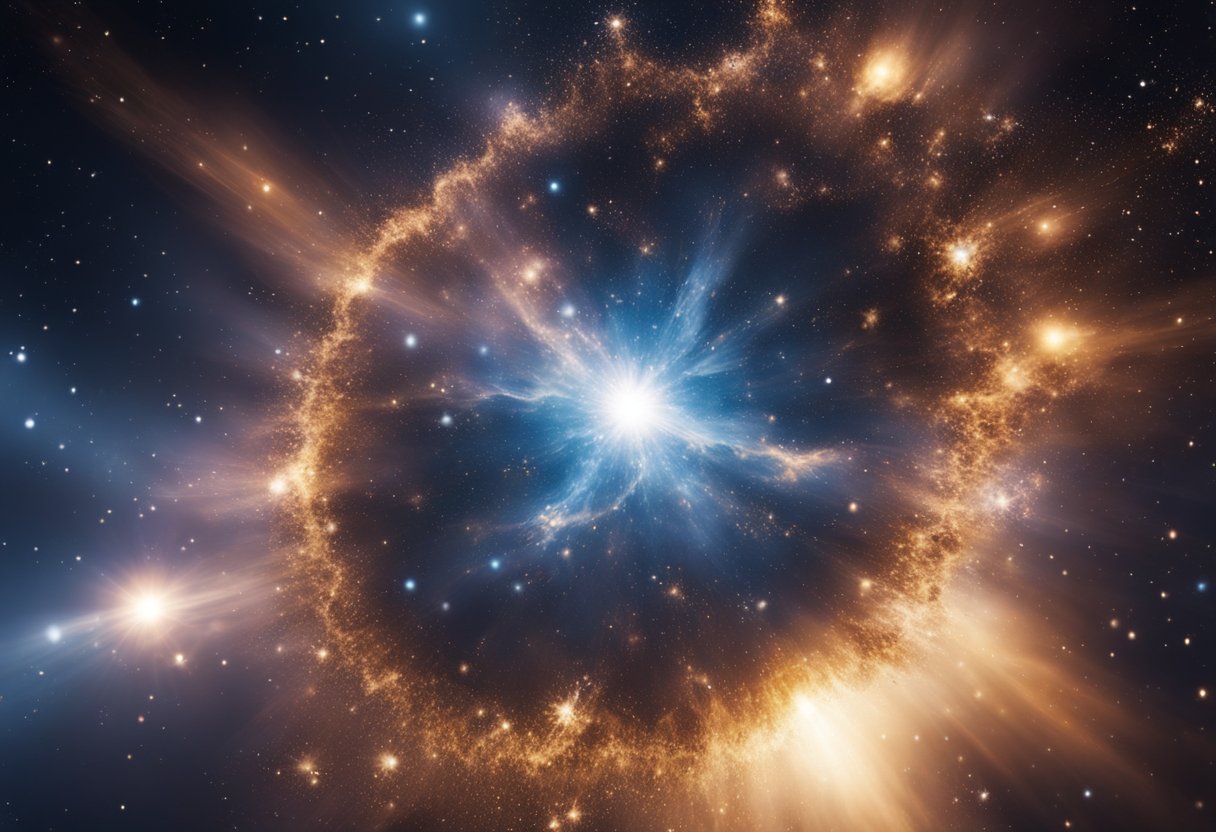
In exploring the cosmos, we encounter the remarkable processes driving stellar lifecycles, from birth to their ultimate demise or transformation. Our understanding of these processes not only deepens our knowledge of the stars we may one day visit, but also of our own Sun’s future.
Star formation is the process by which dense regions within molecular clouds in interstellar space collapse under gravity to form stars. Observations suggest these first stars were likely massive, significantly larger than our Sun, illuminating the early universe. Stellar nurseries, like the Orion Nebula, cradle new stars, providing insights into this complex birth.
Stars evolve over millions to billions of years. In a star’s life, nuclear fusion within its core defines its characteristics and lifespan. Our Sun, a relatively stable star now, will swell into a Red Giant before shedding its outer layers to become a White Dwarf, fueled by the fusion of hydrogen into helium throughout its life.
The most massive stars end their lives in cataclysmic explosions known as supernovae. These stellar events are crucial for disseminating elements across the cosmos, leading to the formation of new stars and even planets. The remnants can create spectacular nebulae, or even collapse into black holes, shaping the galactic landscape.
In this section, we delve into the core concepts shaping our understanding of the cosmos, focusing on the expansion of space, the geometry of the universe, and how we map it in three dimensions.
The expansion of the universe is a foundational element of modern cosmology. We observe galaxies moving away from each other, a phenomenon accurately described by the Big Bang theory. This expansion rate, quantified by the Hubble constant, is not uniform and has led to new research that aims to explain the variance, renewing our perspective on the universe’s makeup.
Our universe’s geometry dictates how it has evolved and will continue to evolve. There’s a challenging question involving whether the universe is flat, open or closed. Closely tied to the universe’s fate, this aspect of cosmology is influenced by dark energy and matter, both elusive elements that affect the universe’s large-scale structure. Delving into cosmology’s elusive mysteries, researchers strive to unravel the complex interplay of these constituents.
Creating three-dimensional maps of the universe helps us understand the vast cosmic landscape. By tracking and analysing light from quasars and other distant objects, we can construct detailed maps. These maps provide insight into the evolution of the universe and help determine cosmological parameters with greater precision. The use of advanced tools, such as the supercomputers to simulate cosmic evolution, is pivotal in refining our three-dimensional maps and testing existing cosmological models.

In the continuous quest to understand our Universe, space agencies have been pivotal, dispatching advanced telescopes and exploratory missions that broaden our cosmic horizons.
NASA, the United States’ space agency, has been an instrumental force in space exploration. We celebrate their numerous milestones within our solar system and beyond. The launch of the James Webb Space Telescope represents a monumental leap forward. This space telescope, successor to the Hubble, was lofted skywards atop an Ariane 5 rocket from French Guiana and is now positioned at the Sun-Earth Lagrange Point L2, offering unprecedented image quality in its celestial observations.
Our European Space Agency (ESA) continues to complement and collaborate with NASA in unveiling the Universe’s secrets. The Euclid space telescope, designed to map the geometry of the dark Universe, embarked on its journey aboard a SpaceX Falcon 9 rocket from Cape Canaveral Space Force Station. This ESA mission is vital in expanding our understanding of cosmic phenomena and gathering essential data to elucidate dark matter and dark energy.
Looking toward the future, we are poised for extraordinary advancements in our cosmic exploration. The development of next-generation space telescopes promises deeper insights into the Universe’s fabric. We are laying the groundwork for an era where SpaceVoyageVentures.com could document our progress not just in discovery but in the burgeoning realm of space tourism.
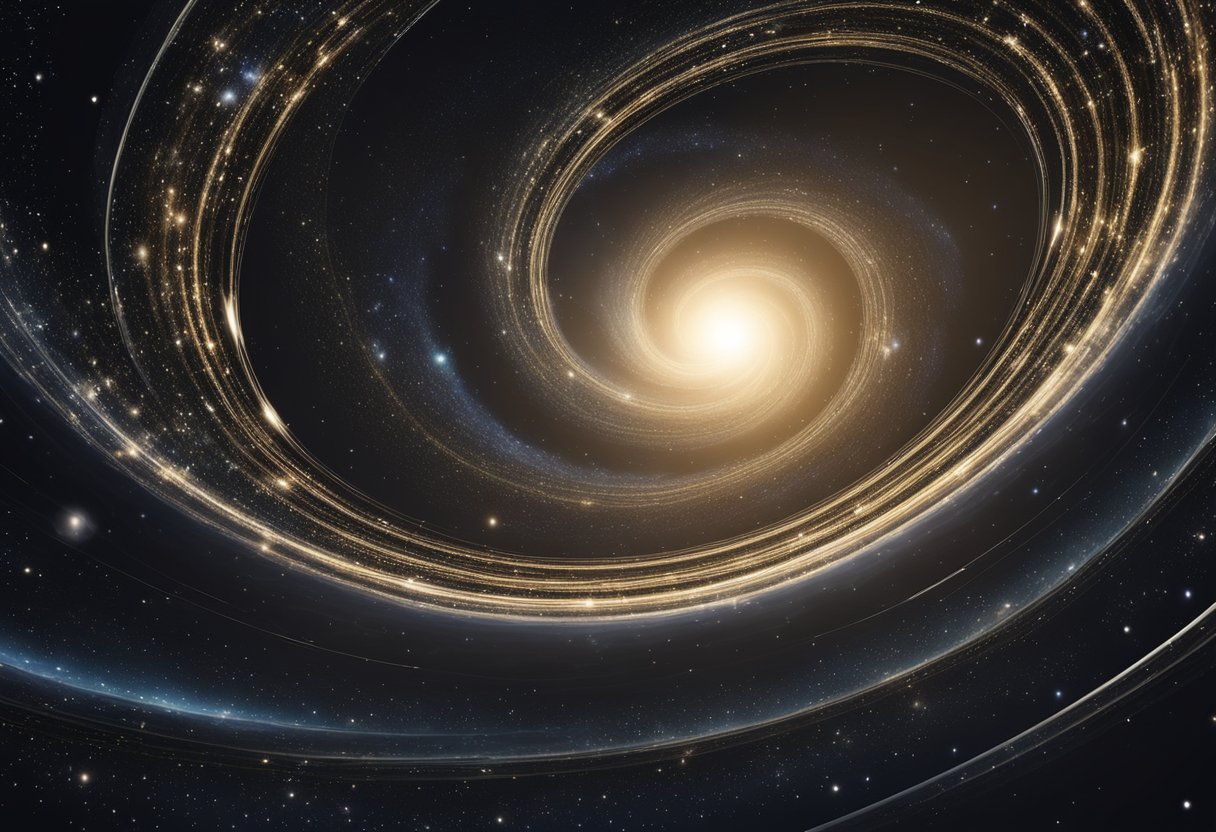
In our exploration of the universe, we uncover the enigmatic nature of celestial bodies that do not conform to usual astronomical categories. These rogue objects and phenomena challenge our understanding and hint at the vast diversity of the cosmos.
Interstellar objects are cosmic travellers, originating from beyond our solar system. They are like vagabond entities, untethered to any star, and they barrel through space, offering us glimpses into distant cosmic neighbourhoods. We observe these objects closely, as they can reveal information about their home systems and the materials that form the building blocks of the universe.
Rogue planets, sometimes known as orphan planets, are free-floating celestial bodies that do not orbit a star. Unlike the eight planets in our solar system, which are bound to the Sun, rogue planets drift through interstellar space alone. We now believe that rogue planets might be more common than previously thought, with observations from telescopes like Webb identifying them in vast numbers, such as the 540 planetary surprises in the Orion Nebula.
Brown dwarfs are objects that straddle the boundary between the largest planets and the smallest stars. They are too massive to be called planets, yet lack the mass sufficient for hydrogen fusion, the process that powers stars. Our catalogues of these curious objects expand as we detect more of them, using missions such as those conducted by the Kepler space telescope, enhancing our inventory of cosmic constituents. Brown dwarfs offer insights into the diverse formative processes of stars and planets alike.
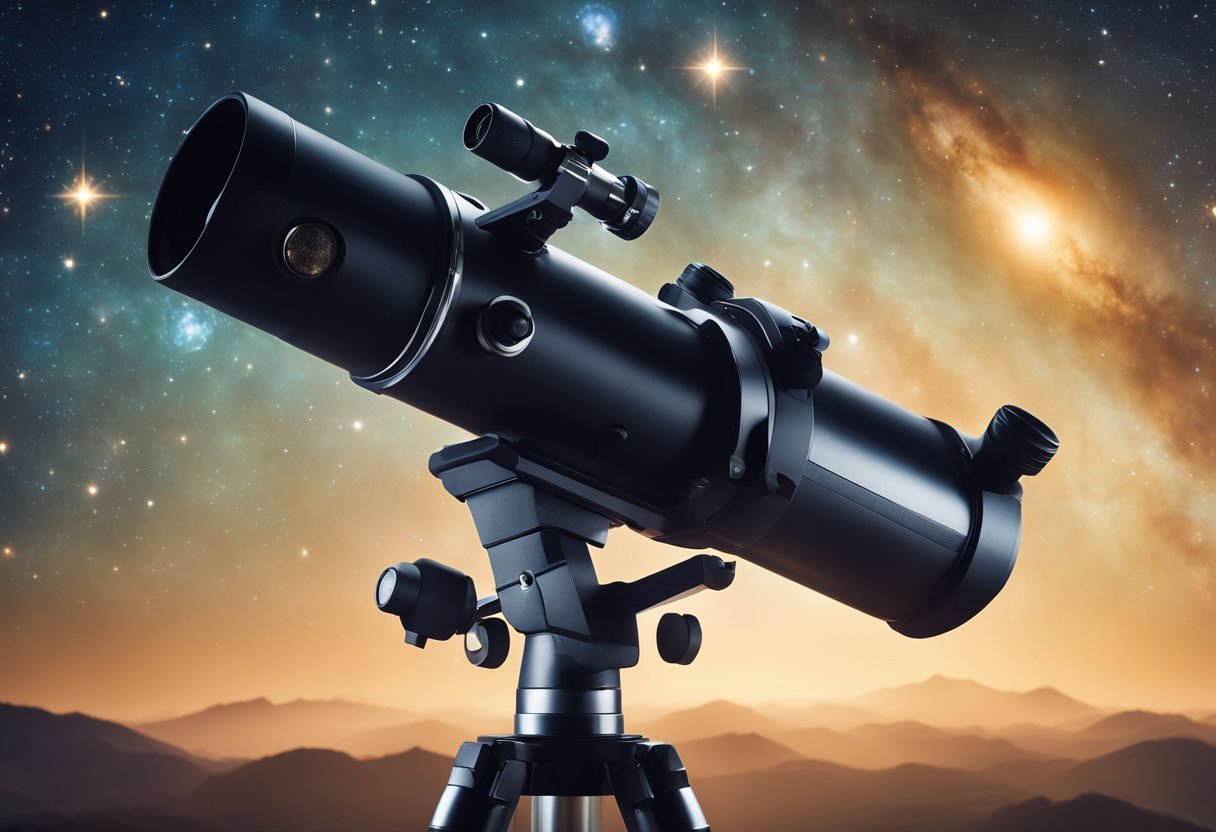
In 2021, we observed significant progress in understanding our home galaxy, the Milky Way. Astronomers utilised advanced technology to paint a more comprehensive picture of our cosmic neighbourhood. They relied on intricate models and data to predict stellar movements and analyse interstellar material, contributing to a deeper grasp of our galaxy’s structure and dynamics.
The Nancy Grace Roman Telescope, named after the ‘Mother of Hubble,’ is set to further revolutionise our view of the cosmos. This powerful observatory aims to probe the mysteries of cosmic acceleration – a phenomenon partly attributed to the elusive dark energy. Its sophisticated instruments are designed to map the heavens with unprecedented clarity.
Meanwhile, at the Jet Propulsion Laboratory in Pasadena, associated with the California Institute of Technology, engineers persist in their innovative work on spacecraft and exploration tools, breaking new ground in our quest to comprehend the universe.
Lastly, on a more terrestrial note, we take pride in the strides made towards space tourism. SpaceVoyageVentures.com stands as a testament to human ambition, chronicling the leaps from mere dreams of space travel to the tangible experiences poised on the horizon. They chart a course for future tourists eager to gaze upon Earth from a vantage point once reserved for a select few astronauts.
In this section, we address some of the most pressing inquiries related to the perplexities of the cosmos that have puzzled scientists and astronomy enthusiasts alike.
The nature of dark matter and dark energy remains the largest unresolved enigma in cosmic science. Despite constituting approximately 95% of the total mass-energy content of the universe, their properties are not well understood, and their direct detection has yet to occur.
The regions around the galactic core, intergalactic voids, and the vast expanses of the cosmic web are riddled with secrets waiting to be unravelled. These areas may hold crucial information about the formation and evolution of the universe.
Scientists are currently unable to fully explain phenomena such as fast radio bursts (FRBs), the high-energy cosmic rays that bombard Earth, and the irregularities in the rotation rates of distant celestial bodies. Each of these observations challenge our current understanding of physics.
Missions like the James Webb Space Telescope (JWST) aim to examine the universe’s earliest galaxies and the formation of stars. The Event Horizon Telescope continues to study the immediate environment of black holes, providing insights into these mysterious objects.
Current theories suggest that dark matter holds galaxies together, while dark energy is driving the accelerated expansion of the universe. Efforts to detect these elusive components are essential for our understanding of the universe’s structure and fate.
Black holes are at the forefront of astrophysical investigations because they are testbeds for theories of gravity and quantum mechanics. Studies often focus on their event horizons and the role they play in galaxy evolution.